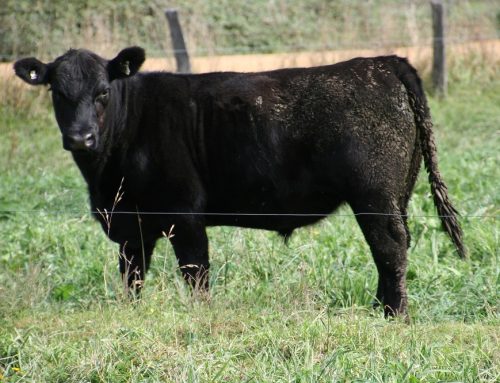The Australian Food Sovereignty Alliance has issued its response to the Animal Industries Advisory Committee Discussion Paper.
Issues in relation to agricultural planning schemes continually affect many of our farmer members and we welcome this opportunity to communicate these issues to the relevant authorities. Find our comments below and access the link to download the full response paper at the bottom of the page.
- Provide stronger strategic guidance by undertaking regional agricultural land capability assessments and identifying appropriate areas for intensive agriculture in local planning policies.
AFSA supports the undertaking of land capability assessments across the state for suitable agricultural enterprises. However, we strongly recommend taking into account community sentiment about intensive agriculture when determining what areas are genuinely to be deemed ‘suitable’.
Recommendation: that local communities are consulted and that where there are significant objections to proposed development of intensive animal agriculture the decision of whether to grant a permit is made democratically with the community’s involvement.
- Strengthen the purpose of the Farming Zone to promote agriculture activity as the priority activity and remove reference to encouraging dwellings as a means of promoting population growth.
Two of the purposes of the Farming Zone are:
To ensure that non-agricultural uses, including dwellings, do not adversely affect the use of land for agriculture.
To encourage the retention of employment and population to support rural communities.
While the Committee has suggested that these purposes are contradictory, AFSA respectfully submits that the regenerative, agroecological farming movement offers an alternative in which increased population on farms is desirable and supports the purpose of farming as the priority activity. Agrarian intellectual Wendell Berry famously called for a better ratio of ‘eyes to acres’ – that is, more people watching and working the land to ensure it is cared for attentively and sustainably.
Former UN Special Rapporteur on the Right to Food Olivier de Schutter has also pointed out that agroecology is ‘knowledge and labour intensive’ – surely a welcome thing when seeking greater employment opportunities in rural Australia, and aiding in slowing rural-urban migration.
Allowing for multiple dwellings on what would be classified a single farm, will aid farmers wishing to practice multigenerational farming. This could allow a smoother transition in the farming population as younger farmers will have the opportunity to live on farm with their own families while they learn by doing. Furthermore, holistic farming on a single plot of land has the potential to support several families making their living from various farming enterprises that support each other socially and ecologically.
So while AFSA strongly supports the need to recognize agriculture as the priority activity in the Farming Zone, we see a need to offer more flexibility to enable farms to construct suitable dwellings for the rich community of workers needed to manage these systems, where those dwellings are genuinely built in support of agricultural purposes.
Recommendation: create more flexibility for the construction of dwellings built in support of the agricultural purposes on farms, while maintaining and strengthening guards against converting farms to purely residential, lifestyle properties.
- Identify in planning schemes defined buffer distances for different types and scales of intensive animal industries.
Under the current inadequate definition of ‘Intensive Animal Husbandry’ the application of buffers can be highly inappropriate to scale. For example, in the case of Jonai Farms where there are just 12 sows (so a total herd of around 110 pigs at any given time) on 9ha of paddocks, the 250m buffer zone from rural dwellings recommended by Australia Pork Limited (APL) is actually wider than the pig paddocks in their entirety, and yet at times there are no pigs visible in a one-acre paddock due to low stocking densities. When applied, however, to a large intensive piggery with the attendant odour issues, most people would object to living downwind of such a structure within 250m.
Recommendation: that after the definition of ‘Intensive Animal Husbandry’ is revised to no longer include small-scale, low stocking density, free-range farms, that buffer distances are determined in close collaboration with communities on a case-by-case basis where intensive agriculture is proposed.
- Require a permit in the farming zones for new dwellings within the buffer distance of intensive animal operations.
As proposed in point 3, the definition of ‘Intensive Animal Husbandry’ must exclude small-scale, low stocking density, free-range farms, and any buffers should be developed in collaboration with the local community on a case-by-case basis.
- Base the generic definition of intensive animal husbandry on the impacts of the operation.
The current definition based on importing 50% of animals’ nutritional needs is clearly inadequate, and does not helpfully distinguish between different systems and their impacts, be they environmental, social or welfare impacts.
Importing 50% of the feed for 200 chickens foraging in rotations on 10 ha is a very different proposition to importing 100% of the feed for 10,000 broilers housed in a shed. Whereas the manure in the pastured operation fertilizes paddocks directly with no need for treatment and removal, in the actually intensive operation, effluent must be carefully managed to ensure nearby catchments and waterways are not polluted.
APL funded research in 2014 that found that pigs in its rotational outdoor piggery study were ‘adding some 300-600kg N/ha/yr and 100-200kg P/ha/yr […] presenting environmental risks to both surface water and groundwater.’ The research is included in APL’s publication ‘Rotational Outdoor Piggeries and the Environment’, which cites cases of pigs being rotated after 6-24 months on paddocks. The citation does not include the stocking density that created this nutrient load.
Using the Nutrient Balance Calculator available on the APL website, we were able to calculate that a system like Jonai Farms (12 sows, 2 boars – total herd size of approximately 110 pigs at any given time on 9ha) where pigs are rotated anywhere from fortnightly to up to two months adds 15kg N/ha/yr and 6 P/ha/yr, and that just one season of lupins would actually deplete the overall available nitrogen and balance the phosphorous and potassium.
What this comparison seeks to demonstrate is the inappropriateness of comparing high-density intensive animal systems with low-intensity extensive animal farms through total nutrient imported alone. A combination of nutrient import and stocking density may serve better to determine the potential impact of livestock agriculture.
Recommendation: that the generic definition of intensive animal husbandry be based on the impacts of the operation, which will be determined on a case by case basis by a metric that takes into account soil type, rainfall, nutrient import, livestock species, stocking density, and pasture coverage.
- Base the requirement for a permit for animal industries on the potential environmental and amenity impacts of the operation derived from an assessment with an online tool.
In principle, AFSA supports the development of an online tool to enable a simple assessment of the potential impacts of animal industries to determine permit requirements, acknowledging the complexity of information needed to make such an assessment (water supply catchments, significant native vegetation, soil type, rainfall, proximity to settlements…).
Such a tool would best be developed through collaboration between government and industry, including both intensive and extensive, large-scale and small- to medium-scale farms.
- Create specific land use terms for poultry farms (broiler, egg and hatcheries), cattle and sheep feedlots and piggeries and other clearly intensive uses, to avoid reliance on a generic intensive animal husbandry definition where possible.
The current Nesting Diagram for Agricultural Land Use Terms (Fig 3) does not accurately reflect contemporary farming practices, however, the nesting of ‘Cattle feedlot’ and ‘Broiler farm’ under ‘Intensive animal husbandry’ does seem to indicate that the current interpretation that has seen issues arise for small-scale free-range farms is not what was originally intended in the scheme.
This highlights the risk in creating specific land use terms that may quickly become outdated as farmers innovate and develop new, regenerative models that don’t fit neatly into the terms dictated by the scheme.
For these reasons, AFSA does not support the creation of specific land use terms for different intensive operations, and instead reiterates the recommendation under point 5 to clarify the generic definition of ‘intensive animal husbandry’.
- Strengthen permit triggers, application requirements and referral arrangements for animal industry applications.
While in principle AFSA supports strengthening permit triggers, application requirements and referral arrangements for genuine intensive animal industry applications (as per a new definition that excludes genuine small-scale free range farms), caution must be applied when increasing regulatory burden on the farming sector, which is already subject to a high regulatory burden. Such strengthening should focus on potential high impact operations, such as large-scale feedlots, broiler sheds, and indoor piggeries.
- Limit the ‘right to object’ in the Farming Zone when standards prescribed for an animal husbandry enterprise type are met.
While we appreciate the impulse to protect agricultural enterprises from the objections that may sometimes arise when ‘tree changers’ or inhabitants of non-farming lifestyle blocks lack sufficient knowledge of normal or innovative farming practices, it is our view that limiting the ‘right to object’ in a democratic society is deeply problematic.
There is a need to balance the importance of community sentiment with evidence-based planning policy that supports agriculture, and AFSA would suggest that another way forward may be in the assessment of objections, rather than in limiting the right to object.
AFSA does not support limiting the ‘right to object’ in the Farming Zone.
- Clarify when farming operations have existing use rights.
AFSA supports clarifying existing use rights to ensure balance is maintained between protecting legitimate existing use rights and not allowing inappropriate new uses to pass undetected, e.g. intensifying animal industries on inappropriate sites.
- Create a single point of contact for all enforcement actions whose role it is to oversee enforcement activities.
AFSA has long campaigned for the creation of an inter-departmental Ministerial Food Forum to ensure strategic and coherent policy development and integration of planning in and across departments managing local food and food systems, population health, transport, land use, education, environmental sustainability, natural resources, infrastructure and economic development. We suggest that a single point of contact only for enforcement carries the risk of a punitive approach rather than coherent policy and planning support for agriculture.
Recommendation: create a Ministerial Food Forum to ensure strategic and coherent policy development across all agriculture and food system activities.
- Increase the role of the EPA as an enforcement body.
See our response to point 11.
- Set clearer prescribed standards and conditions for intensive animal industries in planning schemes using the Codes of Practice approach.
Codes of Practice are unnecessarily prescriptive and quickly outdated. They rarely support innovation and industry best practice. The Committee admits in this very discussion paper that the current Codes of Practice are out of date.
AFSA does not support the implementation of more codes of practice. Instead, we recommend that permits are only granted where impacts have been demonstrated to be acceptable under the requirements, and where deemed acceptable by local communities.
- Develop and maintain a contemporary Codes of Practice for all intensively farmed livestock (as a minimum for poultry (broiler, egg and hatchery), piggeries, cattle feedlots, sheep feedlots, and feedlot dairies).
See point 13.
- Introduce a fast track process for applications that meet defined standards.
While streamlining regulatory burden is desirable to support innovation in agriculture, it must be balanced with appropriate community and environmental protections. Were a fast track process to be introduced, a risk-based assessment should be applied and only low-risk applications (e.g. small, extensive operations not on sensitive sites) be made eligible for streamlining.
- Formally recognise participation in compliant industry assurance programs in the planning process. Some examples include APIQ, NFAS, Chicken Care and Egg Corp Assured.
Industry-based assurance programs are not necessarily aligned with community values, and must be independently assessed before government relies on them to streamline the planning process. While industry bodies have a fiduciary duty to serve the interests of their members, government’s duty is to the public.
At this time, AFSA does not support formal recognition of participation in industry assurance programs as part of the planning process.





